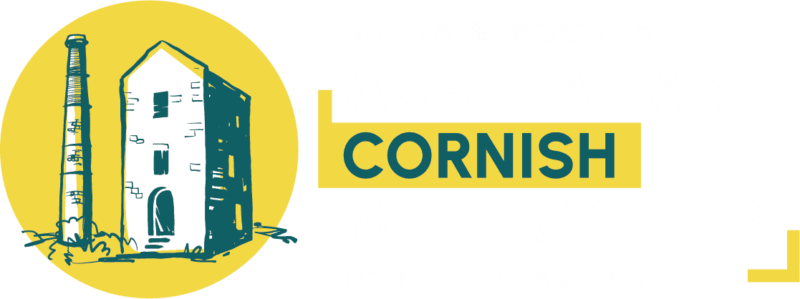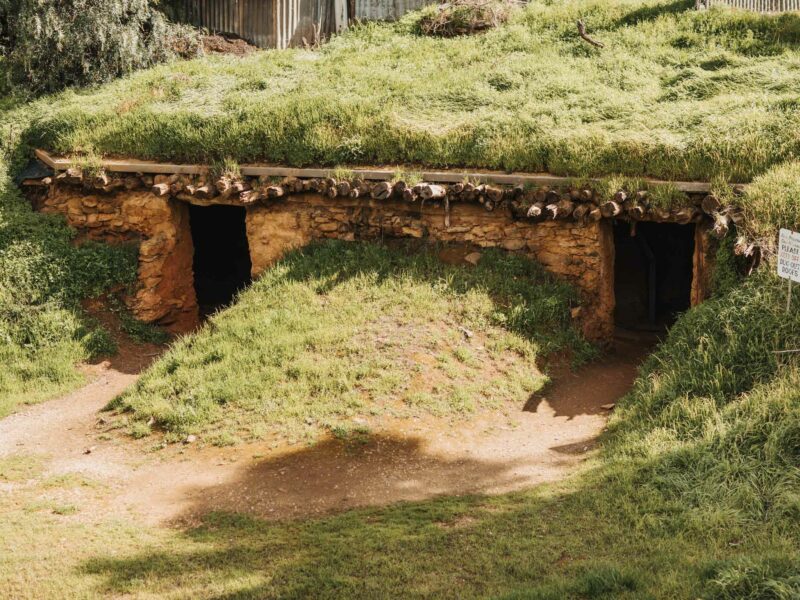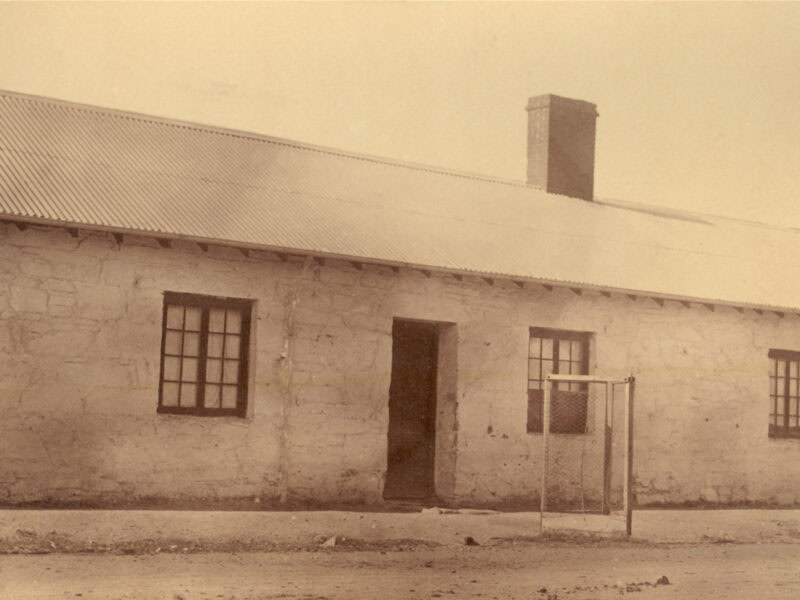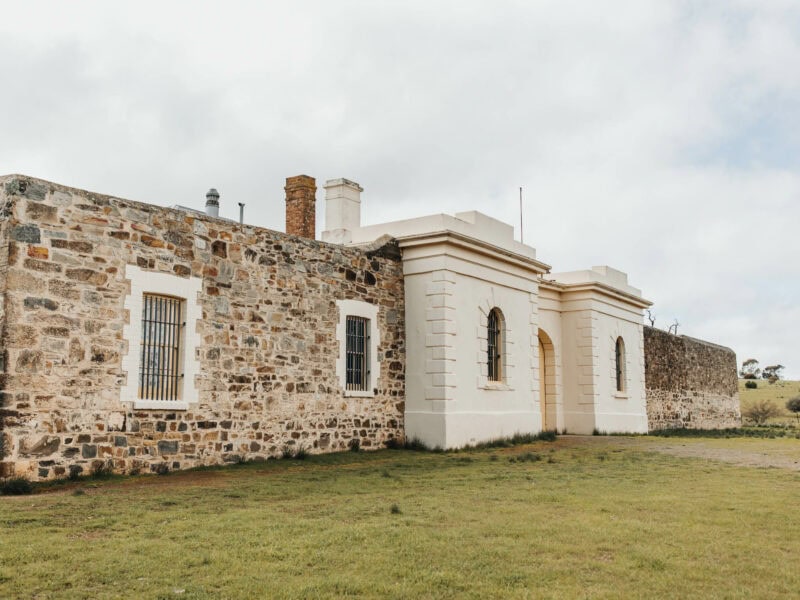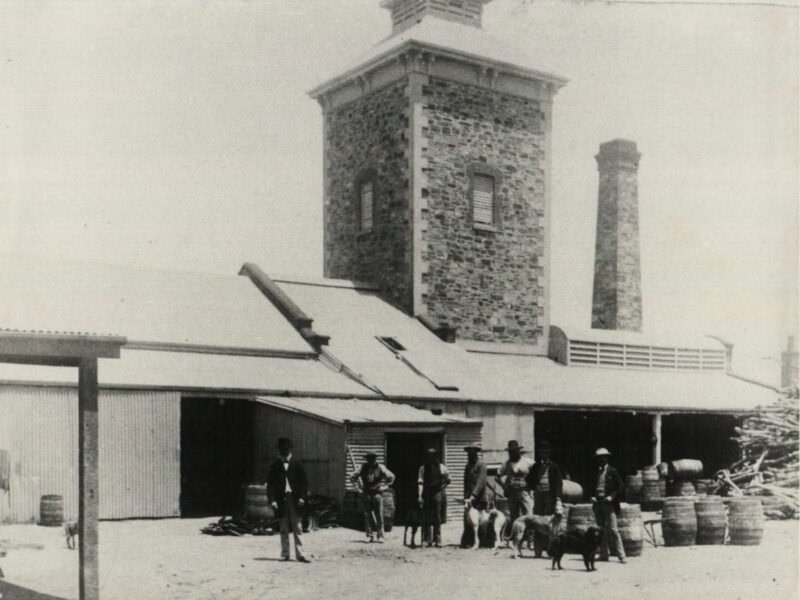Australian Cornish Mining Sites: Burra
Community Life
Dugouts
In 1851 it was recorded that there was a total population of 4,403 men, women and children living in the townships of the Burra Burra Mine and 1,800 were shown to be living in the Burra Creek. Those people that lived in the creek were mainly miners and their families.
The dugouts were excavations of a small size in the banks of a rivulet- one long hole for a door and a small square or round one for a window. The popularity of this type of housing was due to shortages in convential housing and it was rent free. Living in the creek had its perils and the floods of 1851 discouraged people from living there although the practice did continue until 1859-60. Today two pairs of restored dugouts remain near Blyth Street and are in the care of the National Trust.
Paxton Square Cottages
The Paxton Square complex of 33 cottages, in these three terraces around Paxton Square, is one of Australia's nest examples of company housing. As early as 1848 floods in the creek highlighted the dangers of the dugouts and the company encouraged people to leave their underground homes. Among the company’s dwelling were the Paxton Square rows. Paxton Square Cottages was named after William Paxton, one of the founders of the South Australian Mining Association. The attached two, three and four roomed cottages were constructed by Cornish masons.
The first group of 14 cottages were constructed in 1849, with all 33 completed by 1851. By 1876, 161 people lived in the Paxton Square cottages. The company charged 3 shillings a week rent from the average weekly earnings of 25 shillings.
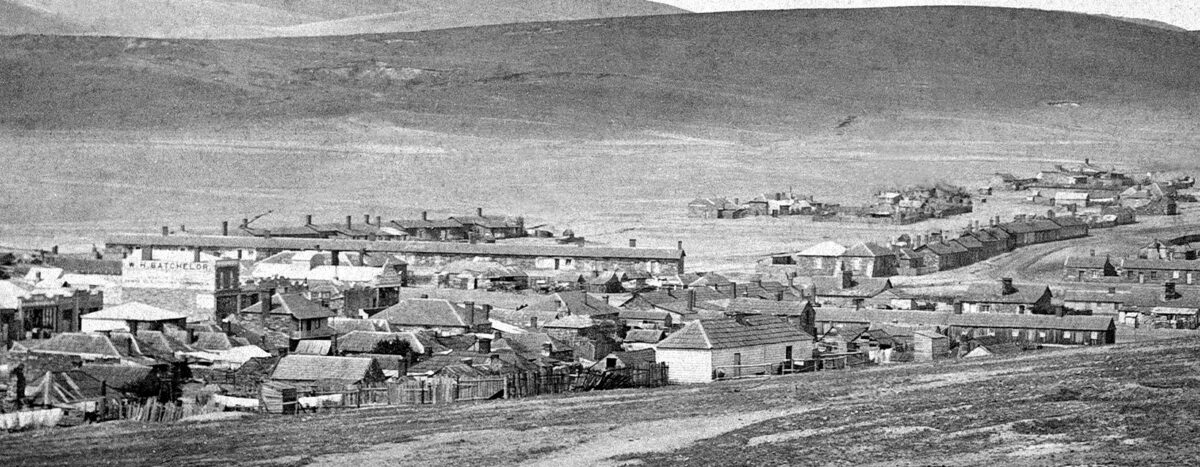
Redruth Gaol
The Redruth Gaol was constructed within the period of significance 1845-1877 and was part of the structure of the mining town. There were not only large numbers of labourers imprisoned but miners were represented.
Punishment in the 19th century was much more severe than today. One boy in 1874 was sentenced to one month with hard labour in Redruth Gaol for breaking a window in Paxton Square (in Kooringa, Burra). Its presence in the town and that it was the first gaol outside of Adelaide emphasises the importance of Burra as one of Australia's early large inland population centres.
Unicorn Brewery
In 1873 the erection of a new brewery in Burra probably seemed a risky venture. Although the Burra Mine was still working, the number of miners employed there had dropped from 1 000 in the early 1860s to less than 300.
The Unicorn was a well equipped brewery with the brewing tower and other building built of stone, all enclosed by a stone wall. An engine room housed a five horsepower vertical steam engine operating force pumps and next to it was a wood-red steam boiler. There were seven underground cellars, built of stone and brick, which could hold 500 hogsheads. The ale and stout had a good reputation largely attributed to the quality of the water and skill of the brewer; in 1880 a new well was sunk supplying the brewery with up to 2000 gallons a day.
By 1889 there were three brews per week and the Unicorn supplied all the hotels in Burra and surrounding districts as well as sending beer by rail to towns further north and to Broken Hill.
Burra Heritage Passport
The town of Burra is rich with Cornish mining history and you can unlock the secrets of Burra's Heritage with the unique Passport Key. The Burra Heritage Passport provides first-class access to all these intriguing heritage sites and more!
